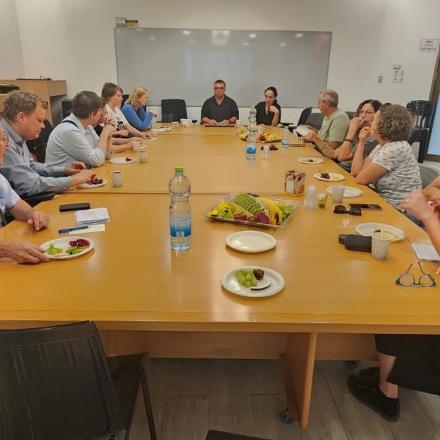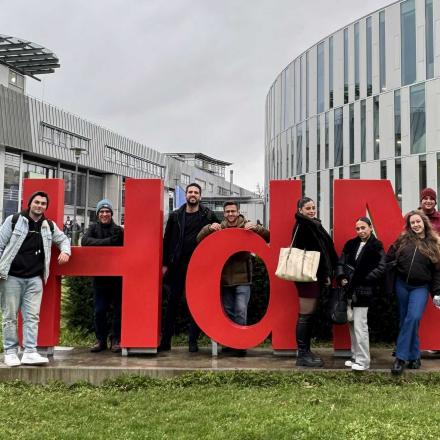July 13-29, 2021
Curator
Smadar Levy
The year is not yet over, but looking back, we can safely say it has been uniquely challenging. As last year, in 2021, we once again experienced lockdowns and social distancing due to COVID-19. For good measure, we also spent time sheltering from the recent hostilities and rocket fire from the nearby Gaza Strip. Life, it seems, has receded to the threshold of our safe rooms.
On July 13, 2021, the Art School opened the annual Graduates’ Exhibition. The participating recent graduates speak to us “from the threshold,” addressing reality within a particular landscape, space or location. Each body of work expresses, in a unique and compelling way − spatially and materially − a possibility or manner of perceiving something that cannot necessarily be seen, and giving voice to that which makes no sound.
The artists worked from within a theoretical shelter of their own, each individual exhibition invites the viewer to cross the threshold, to enter and move around within a sensory space and a particular range of consciousness about life and reality.
What Yuval Zohar, sees from her window in Dimona − is the eponymous “Textile Factory.” She examines and dismantles, using multimedia techniques, the various affective elements of fear as they appear in horror films. Through an undeclared escapism, she paints an intimate collection of characters and scenes from these films; sculpts an apparently dramatic illusion, utilizes shallow cinematic techniques from the genre, derived from video clips; and even misleads the viewer, with a touch of humor, about the conditions of visibility of her own work.
Rom el Qadi presents a series of ongoing video testimonies in “This is me.” She hides the faces or other identifying elements of her subjects, while el Qadi herself stays within her own, protected space, behind the camera. Seven Bedouin women who were married off in childhood tell their own, life stories. With bravery and candor, they reveal the truth about the status of women in traditional, patriarchal families and communities. Under conditions of limited visibility, el Qadis’ camera allows her subjects to give voice, and even to criticize. As for us – we are allowed to listen.
Martin Bernardo Rodriguez work emerges from the conditions of visibility and apparently unremarkable aesthetics of locations on the margins of society. His sculptural and sketch works, entitled “Good Hands,” rely on the materials and aesthetics of a construction site. Having himself worked in construction for a living, Rodriguez returns, in his own artistic space, to the images of invisible, anonymous laborers, and to the material and visual creation and creativity, at times even poetic, of their labors.
In “Nowhere,” Liron Fein carries out an insulated and layered deconstruction of the landscape – physical, emotional and conceptual. What emerges is a tactile work in quest of a safe space, a refuge, one that is protected and protects against danger. In each one of her works, individually felt-wrapped by hand, she dismantles and then reconnects landscape elements by time of day, season or color scale. Like the work of felt wrapping itself, meticulous and intimate, but at the same time draconian and demanding, the beauty, softness and warmth that protect her works threaten to fray and come apart under the strain of an oppressive silence. Upon entering and leaving the exhibit, the visitor given is a fragrant, felt wrapped piece of soap. A souvenir, as it were.
From a corner of the roof at the far end of her house, Nasra Azberga looks out upon the open space that surrounds her, that which she sees and that which she imagines. Her luminous and poetic video exhibit, “Breathing Freedom,” is enveloped by the intimate sounds of her voice singing in Arabic, filling the space all around. Silent, pastoral, moving images of laundry swing playfully in the wind, along with depictions of doves in flight and the glow of the moon at nightfall. Withdrawn, with intimate tenderness and care, Azberga creates a space for the sublimation of the life experiences and desires of a single woman, bound by the limitations of visibility and the discourse of a traditional society.
More News

Strengthening Collaboration with Germany

